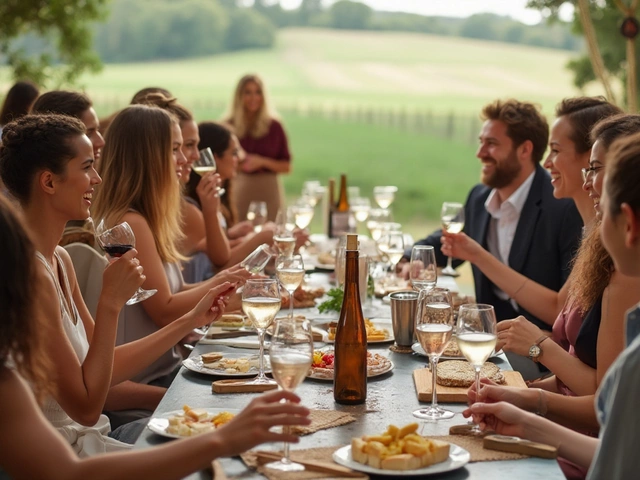Best French Wine: Simple Picks for Every Taste
France makes a lot of great wine, but you don’t have to be a sommelier to enjoy it. Below are the most rewarding bottles you can find, whether you like fresh whites, juicy reds, or something in‑between. I’ll show you why each wine works, how to taste it, and what foods match best.
White Wines That Shine
Sauvignon Blanc from the Loire Valley offers bright acidity, green apple, and a hint of goat cheese herbs. It’s perfect on a sunny patio with salads, shellfish, or fresh goat cheese. Look for names like Sancerre or Pouilly‑Fumé; they deliver the classic minerality without breaking the bank.
Chardonnay from Burgundy (think Chablis) brings crisp citrus and a clean, flinty finish. It’s a great match for oysters, baked fish, or creamy sauces. Choose a Chablis Premier Cru for a step up in complexity, but still easy to drink.
If you want something a bit richer, try a Viognier from the Rhône. It serves up stone‑fruit aromas and a buttery mouthfeel that pairs well with roasted chicken or spicy Asian dishes. A small glass can be a rewarding surprise after a typical white wine night.
Red Wines That Impress
Pinot Noir from Burgundy is the go‑to red for light‑bodied lovers. Its red‑berry flavors and silky texture work with salmon, mushroom dishes, or even pizza. Look for Côte de Nuits villages for the best balance of fruit and earth.
Cabernet Sauvignon from Bordeaux (especially the Médoc) delivers dark fruit, firm tannins, and a touch of oak. It holds up to steak, lamb, or hearty stews. If you’re new to Bordeaux, start with a “Super‑Secondé” label – you’ll get quality without the high price tag.
For a bolder, spicier option, go for a Syrah from the Northern Rhône. Places like Côte‑Rôtie and Hermitage give you peppery, smoky notes that pair wonderfully with grilled meats and aged cheeses. A single sip often reveals layers of black fruit and leather.
All these wines are easy to find at most wine shops, and most have a price tag that matches their quality. When you shop, check the vintage year – recent years (2018‑2022) are generally more lively, while older bottles offer depth and subtlety.
To get the most out of any French wine, serve it at the right temperature: whites chilled (45‑50°F), reds slightly cooler than room temperature (60‑65°F). Use a clean glass, swirl, then sniff. You’ll notice aromas that guide you to the first sip.
Pairing doesn’t have to be strict. If a wine feels right with your meal, enjoy it. The fun part of French wine is experimenting – a Sauvignon Blanc with a cheese board, a Burgundy Pinot with a veggie burger, a Bordeaux Cabernet with a chocolate‑dark dessert. Trust your palate and have fun discovering the best French wine for you.
Discover what makes French wine legendary, explore the best reds and whites, and learn tips for pairing and tasting. Find your ideal wine for every mood and moment in France.
View Details

